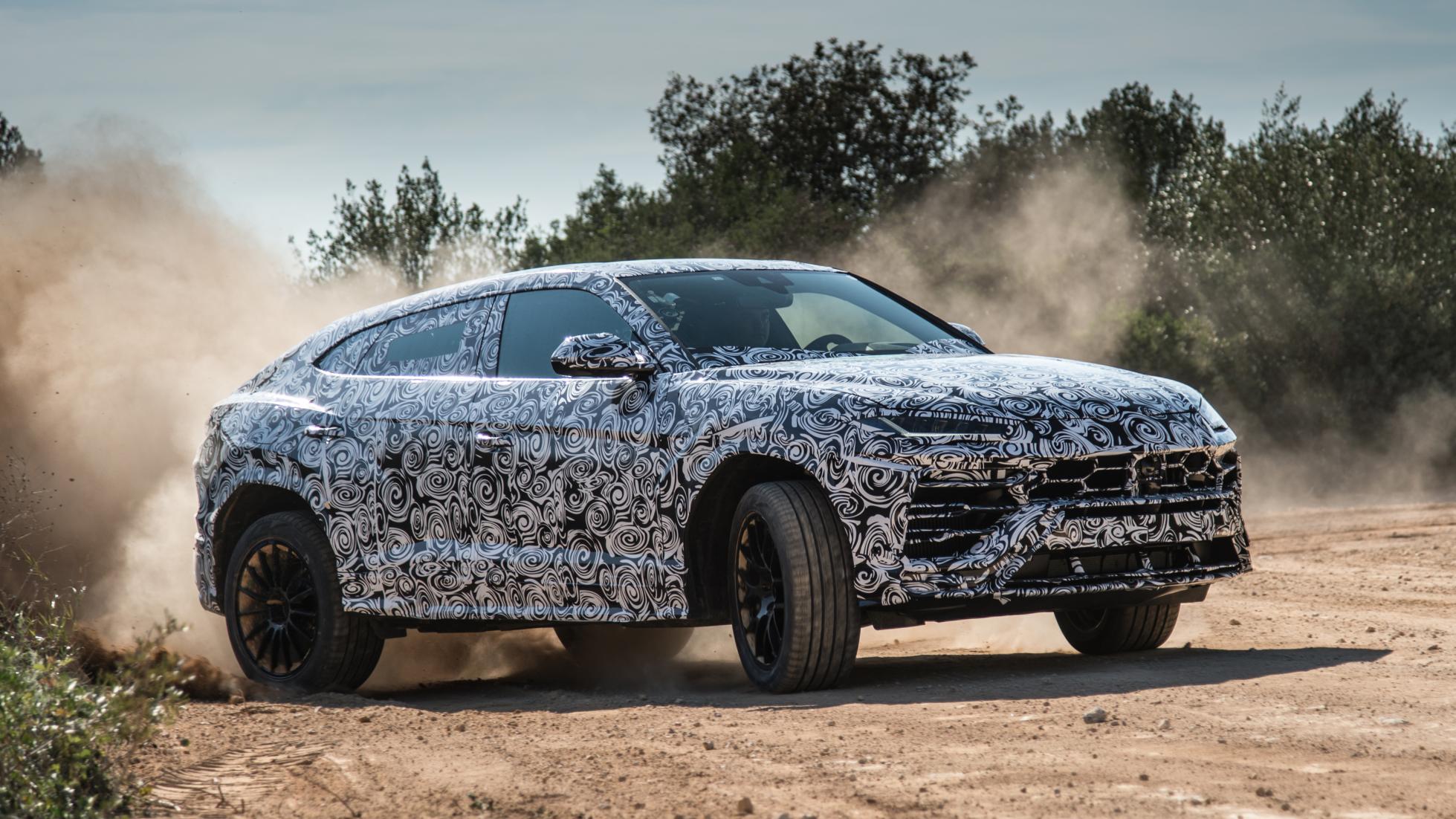
Over two tonnes of super-SUV is heading towards the Italian scenery. Fast. This is bad. After a confidence-inspiring first lap around the Strada Bianca gravel circuit at the top-secret Nardò test facility in southern Italy, the combination of over-commitment and surface change sees me charging towards the bushes.
My subsequent slide into the right-hander continues for what seems like a heroic length of time but is, in reality, a couple of seconds and somehow I emerge out the other side. This is good.
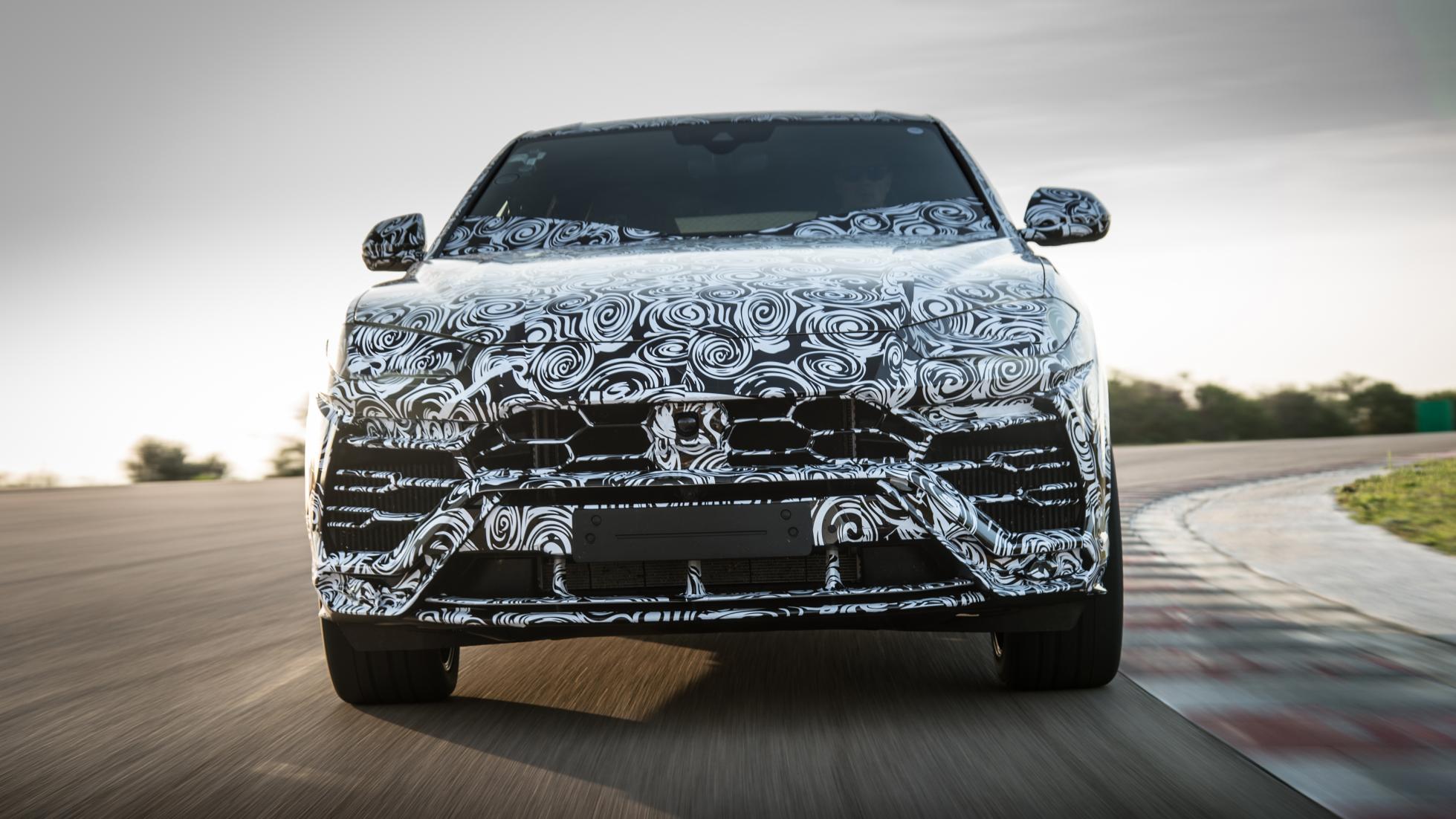
Subsequent laps give me time to try and process more of what’s going on: the grip and acceleration is impressive, but the car’s poise is what grabs your attention. Its ability to manage its un-Lamborghini-like mass at speed on an undulating, constantly changing surface is staggering. It never runs out of suspension travel, never bottoms out; it just gets on with it allowing you to focus on throwing it into the next corner and – hopefully – exit sideways while trailing a plume of dust. This is no ordinary Lambo.
Ever since the debut of the Urus concept at the Beijing show in 2012, the world has been coming to terms with the prospect of a Lamborghini SUV. Five years and a £170m investment in the Sant’Agata facility later, I’m part of a privileged group of four journalists invited to Nardò in late October to drive the prototype and feedback on the results.
While many people will baulk at the thought of a Lamborghini SUV, the reality is that, for the brand to have a future, and be able to create the next generation of hypercars and supercars, it had to make an SUV – you can’t argue with the metrics of what the Cayenne did for Porsche. The big question remains: is this Lamborghini just a re-bodied Audi Q7? Well, while the technical recipe for this new breed of Lamborghini does take substantially from the VW parts bin and there’s some obvious crossover, it’s blended to its own very unique Italian recipe.
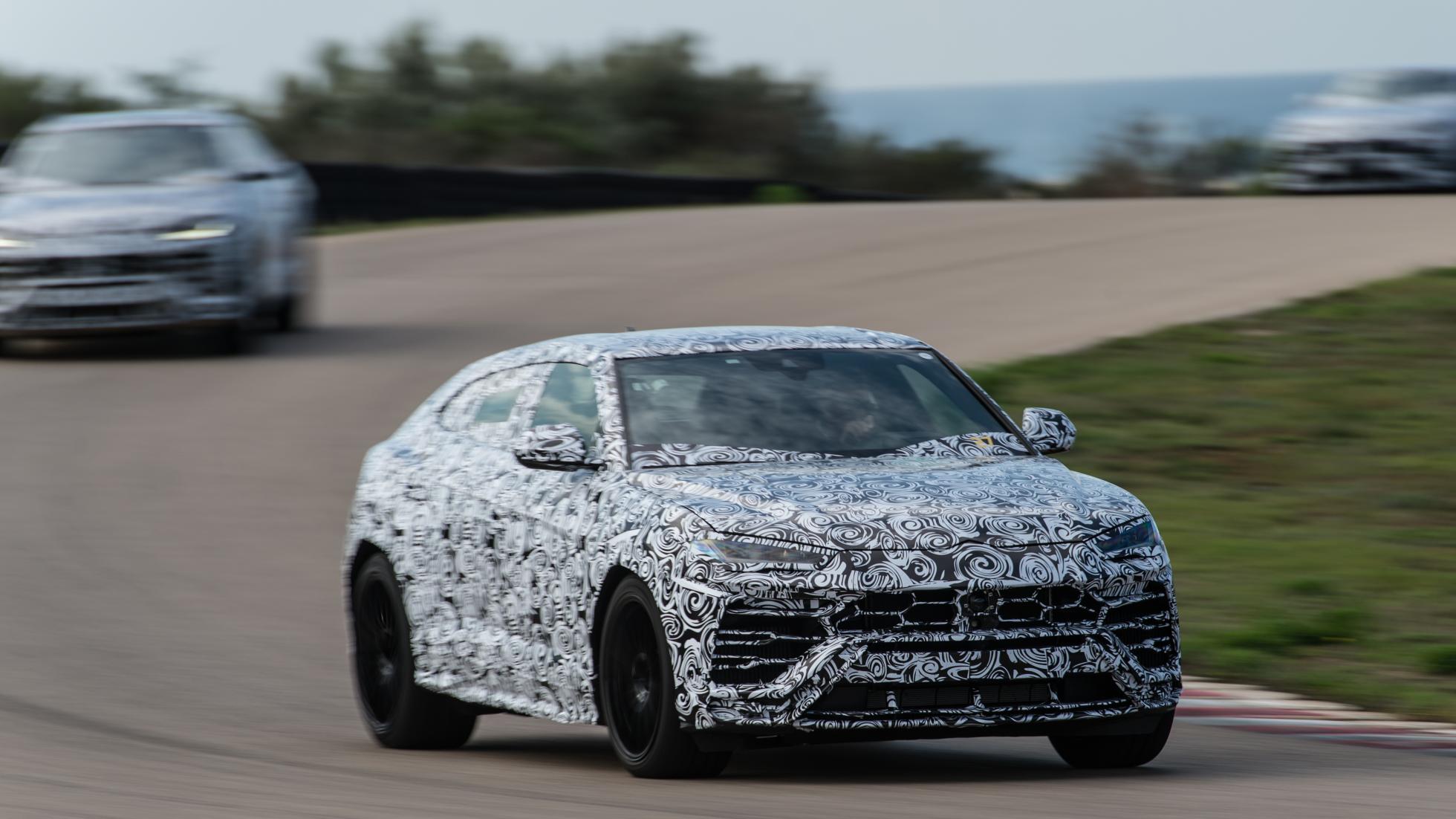
Like the Bentley Bentayga, Audi Q7 and new Porsche Cayenne, the Urus sits on the VW Group’s MLB platform, and at 5.1m long, 2m wide and with a 3m wheelbase, it has an imposing mass, just like its cousins. Main difference? It stands just over 10cm lower than the Bentayga and Q7, so it has a much more aggressive stance.
Below the skin the Urus is driven by a 4.0-litre twin-turbo V8 petrol producing 641bhp and 627lb-ft of torque delivered through an eight-speed auto. The Urus is AWD with a 40/60 torque-split front/rear (with a maximum of 87 per cent to the rear and 70 per cent to the front).
There’s also rear-wheel steering capable of six degrees of movement to keeps thing agile at slower speeds by virtually reducing the wheelbase by 600mm, and stable at high speeds, extending it by 600mm. All of this is aided further by the torque vectoring rear axle. As in the Bentayga, the Urus features adaptive air suspension and active anti-roll bars powered by a 48V system.
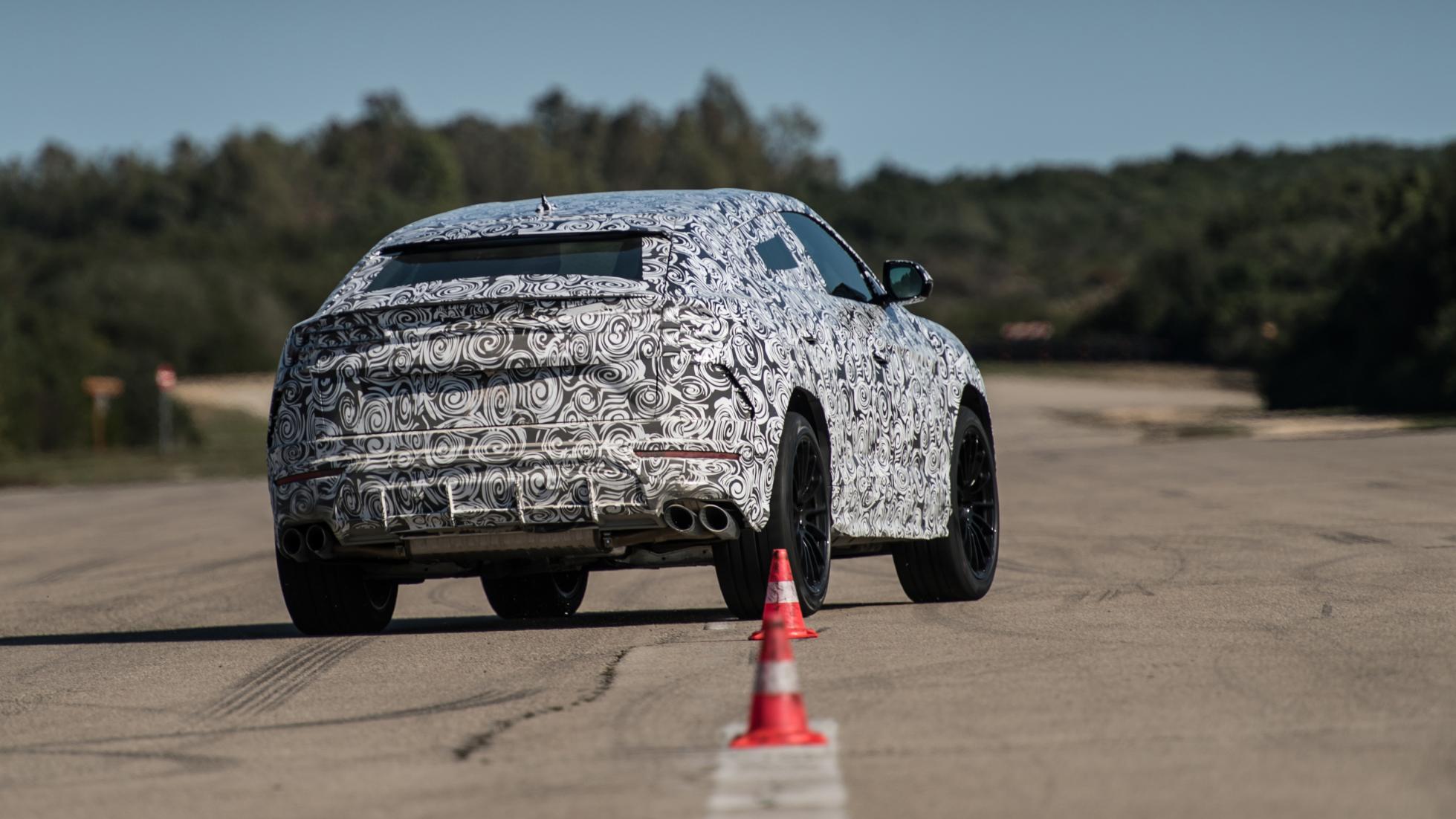
To contain the car’s substantial mass and brutal performance, the Urus features the largest carbon-ceramic brake discs ever fitted to a production car (440mm front and 370mm rear) which is good because the Urus is the fastest production SUV there is, with a 0–62mph time of 3.7 seconds, and a vmax in excess of 186mph. These are figures Lamborghini’s R&D director, Maurizio Reggiani – the man responsible for pouring the DNA of a supercar into the Urus’s huge frame – describes as fundamental minimum criteria for a car to be considered a true modern Lamborghini.
The cabin (which we’re not able to show you images of it until the launch on 4 December) oozes the usual Lamborghini staples: heavy use of hexagons, lots of carbon fibre, hand-stitched leather, cool touch metal all arranged with a sense of symmetry around the wing-like centre console. There are two touchscreens, one for nav, audio and vehicle settings, and below it another for the climate control. Below that sit three levers and a start/stop button hidden beneath the usual flip-up fighter jet cover.
On the left is the Anima control with the usual Strada, Sport and Corsa settings we’re familiar with, plus additional options for Sabbia (sand), Terra (dirt) and Neve (snow). Each setting changes the engine, transmission, steering, suspension, anti-roll bars, rear-wheel steering, ESC, rear diff and engine sound… all of which you can keep up with through the information displayed on the third and main TFT screen in the dash.
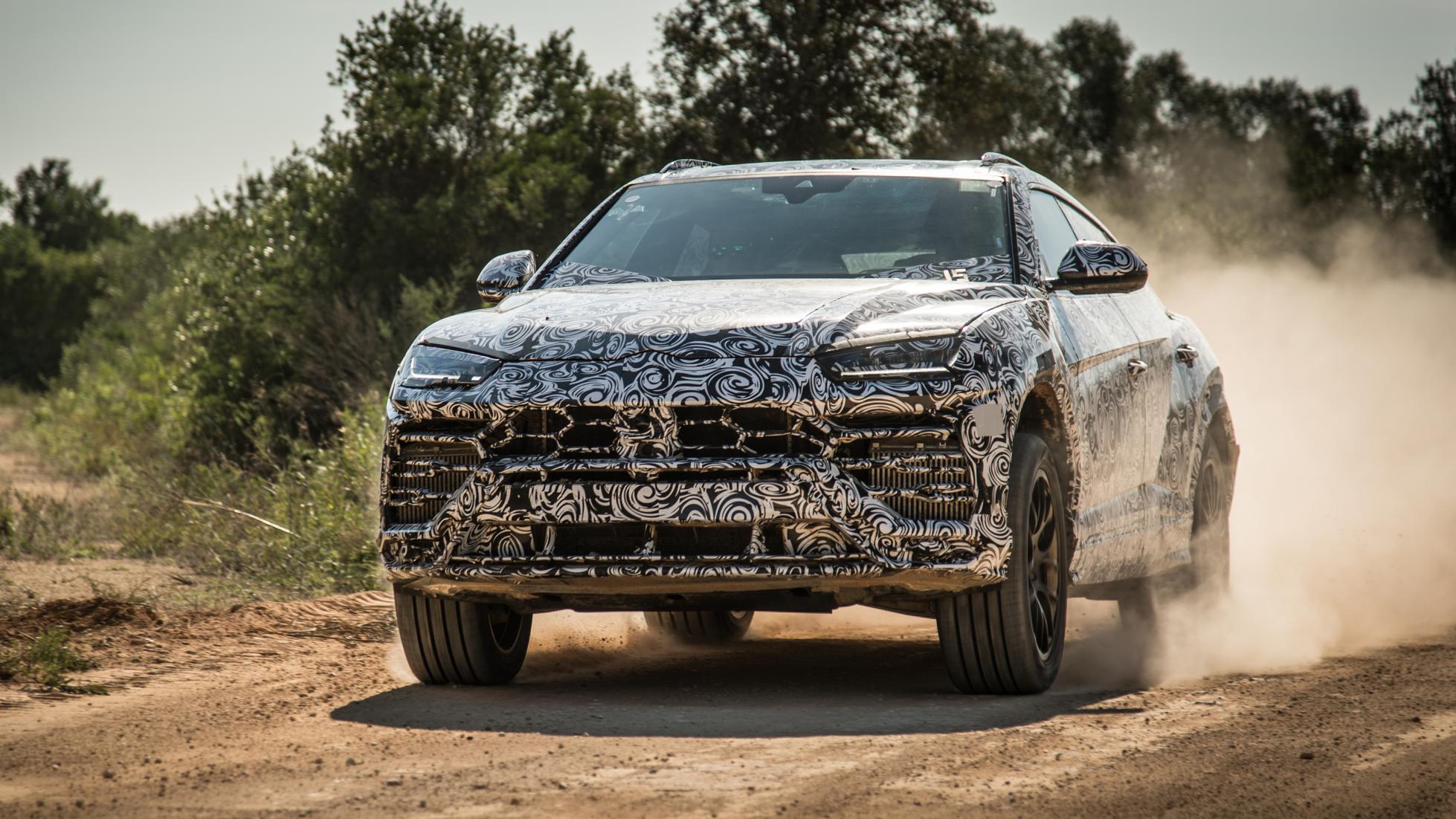
You may recognise the interface from the latest Audi A8, but all the graphics are unique to Lamborghini. In the centre is the “gear shifter interface” which engages reverse when pulled. To the right is the Ego toggle, which allows you to customise your own options for powertrain, steering and suspension.
While you sit considerably higher in the Urus than any other current Lambo, the height of the dash, the narrow depth and steep rake of the windscreen, the adjustability of the seats and the way the interior wraps around you, make you feel like you’re sitting much lower, within the car’s core. The rear space is impressive, despite the sloping roofline, with plenty of headroom for six-foot-plus passengers and there’s a decent sized boot. But now back to the track…
With my seat adjusted as low as possible, the car in Corsa and those performance figures still percolating, it’s time to head to another part of the Nardo car playground – the 6.2km handling circuit with its long straight and 16 corners, and see how the Urus fares with higher speeds and more grip.
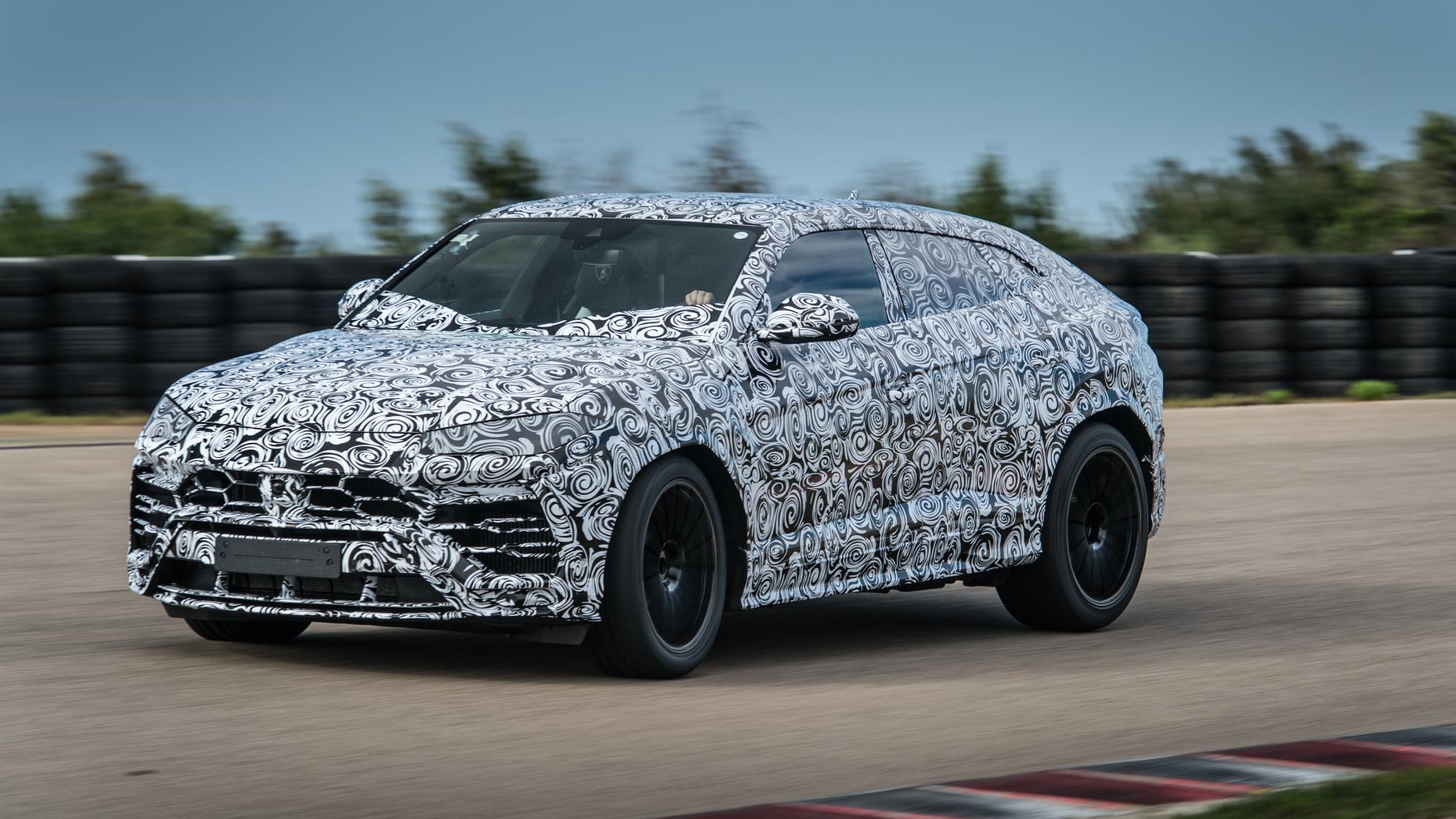
There are three Uruses in formation as we leave the pit lane. Up front the development car is being driven by Lambo’s chief test pilot Mario Fassanetto, I’m second in the queue and being followed by another wrapped prototype Urus. These are early pre-production cars, all are running on 22-inch rims (there are options for 21s and 23s) fitted with Pirelli P Zero Corsas for this track element. The focus of today is to provide feedback to the development team for the final flurry of the development process. While the hardware is essentially locked down, the software can be developed for a few months yet…
As we head out of the pits and down the main straight in formation, the most obvious differentiator is the noise. For those fortunate enough to have experienced the stunning V10 in the Huracan Performante or the mighty V12 in an Aventador, the bi-turbo V8 takes some getting used to. But the reality is that in off-road applications you need low-down torque, and the bi-turbo V8 delivers that where a V10 would struggle.
That’s not to say that the V8 (it has a lot in common with the Audi RS6 unit) doesn’t have its own character – there’s a decent rumble and it cracks on downshifts – but we’ve spent years being pre-programmed that anything with a raging bull on its bonnet should make the hairs on the back of your neck stand up. It takes a while to adjust.
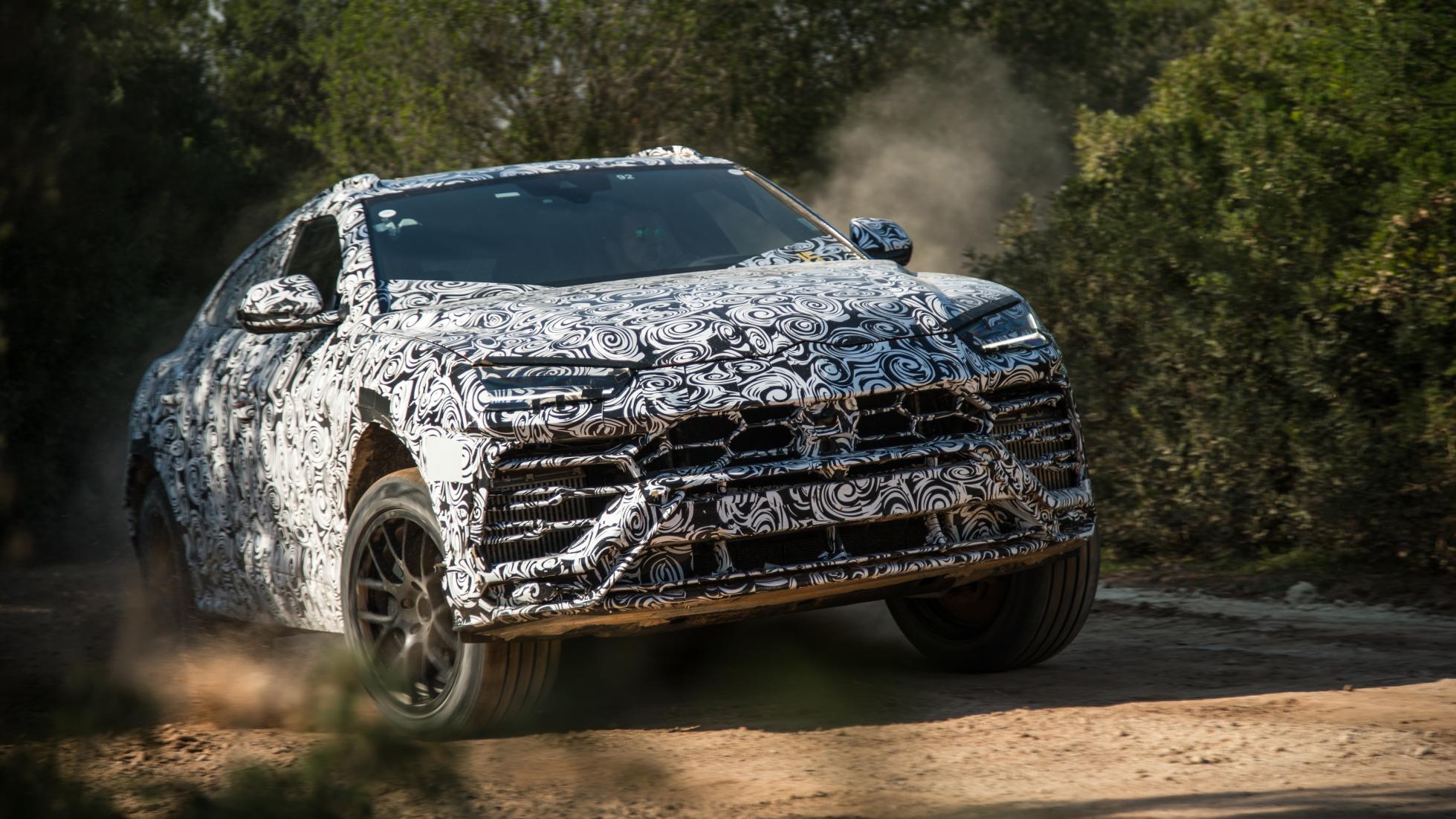
What you can’t argue with is the performance. After a few exploratory slower laps, which showcase the Urus’s ability to hide its mass, the 48V anti-roll system working overtime to reduce pitch, Mario turns out of the final corner and fires down the pit straight.
The last time I was here was to drive the Centenario and I saw 170mph at the 100m board for the first corner, in the Urus I’m touching 156mph as we enter the same long sweeping left-hander that tightens into a more serious left turn. The fact that after just a couple of laps you end up leaving your braking later and later into the second element of the corner, and carry huge triple-figure speeds into the first part, with the car staying level and composed, will be enough to soothe most Lambo enthusiasts’ fears. But, as the laps progress, the Urus also proves deeply capable in other areas.
Clearly there are vast forces and even larger processing power at work here, but those huge brakes shed speed without drama and never fade, and the performance out of the corners as the Urus vectors the torque fore and aft is spectacular. It feels far more nimble than something weighing in excess of two tonnes has any right to.
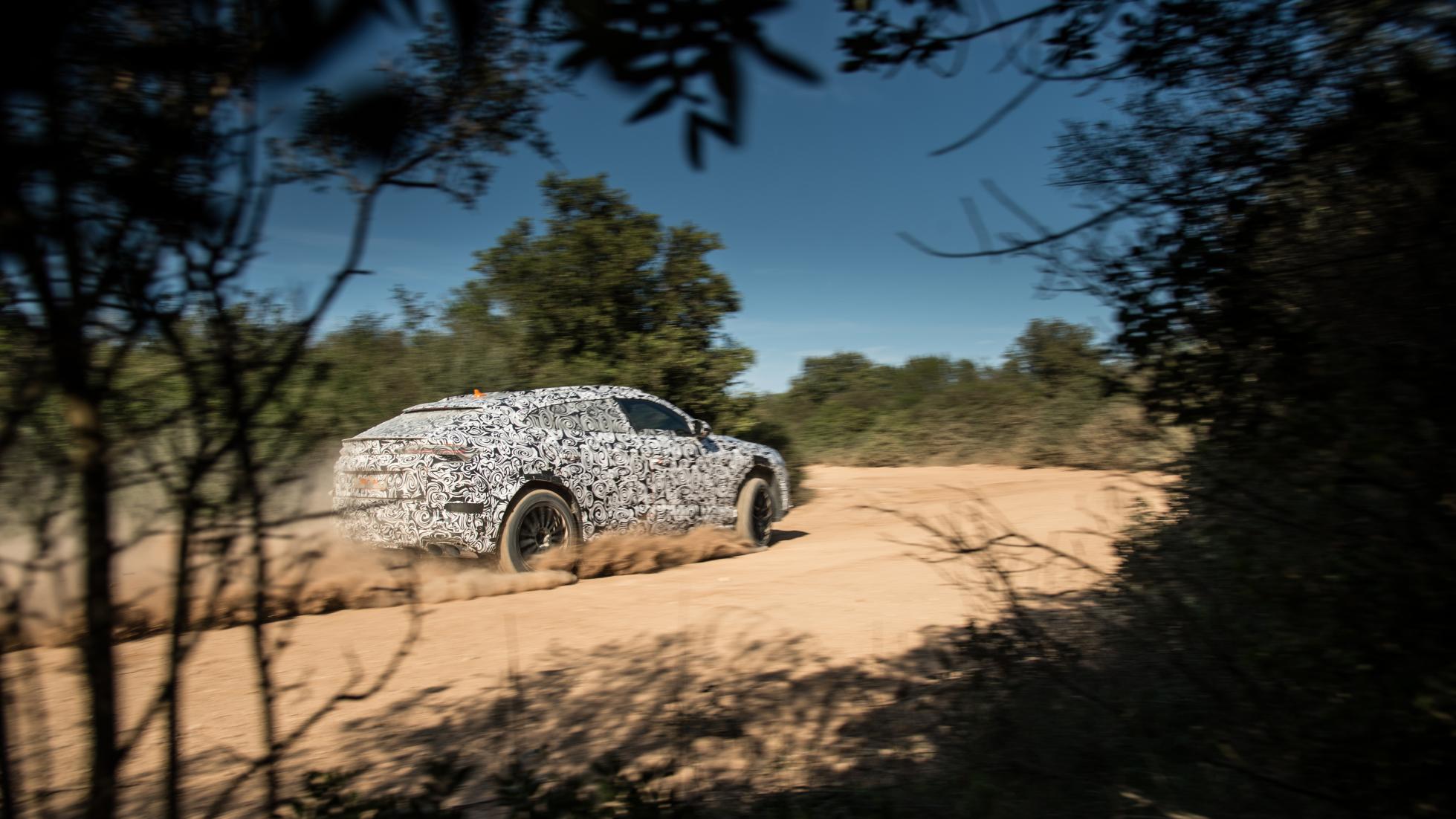
We have five sets of triple-lap stints, swapping between different cars with different software maps and I take the opportunity to cycle through the different on-road modes: Strada, Sport and Corsa. Each delivers an increasing level of connectivity and reactions from the steering, throttle and gearbox, with Corsa firing spikes of torque through the ‘box on each upshift, an element that feels forced and still needs finessing. I’d also have liked greater weight in the steering and more pronounced differentiation between the modes, something the team is working on.
As we near the end of our track session, the Urus convoy is working furiously and I’m the meat in the SUV sandwich. As we peel around the circuit and exit a series of turns I’m suddenly aware of significant strands of rubber flicking off the lead car and clattering into my windscreen. While the Urus has done a deeply impressive job dynamically, it’s clearly masking the huge forces the tyres are having to deal with.
Fast through another set of bends and, again on the exit, my screen is bombarded by black worms of soft rubber. As we return to the pits for the final time, I stop to check the tyres. The assault on the screen of my car has been created by warm rubber shifting into the gaps in the tread pattern and then being flicked out as the lateral load decreases and the speed builds, which highlights the extremities of the engineering at work here.
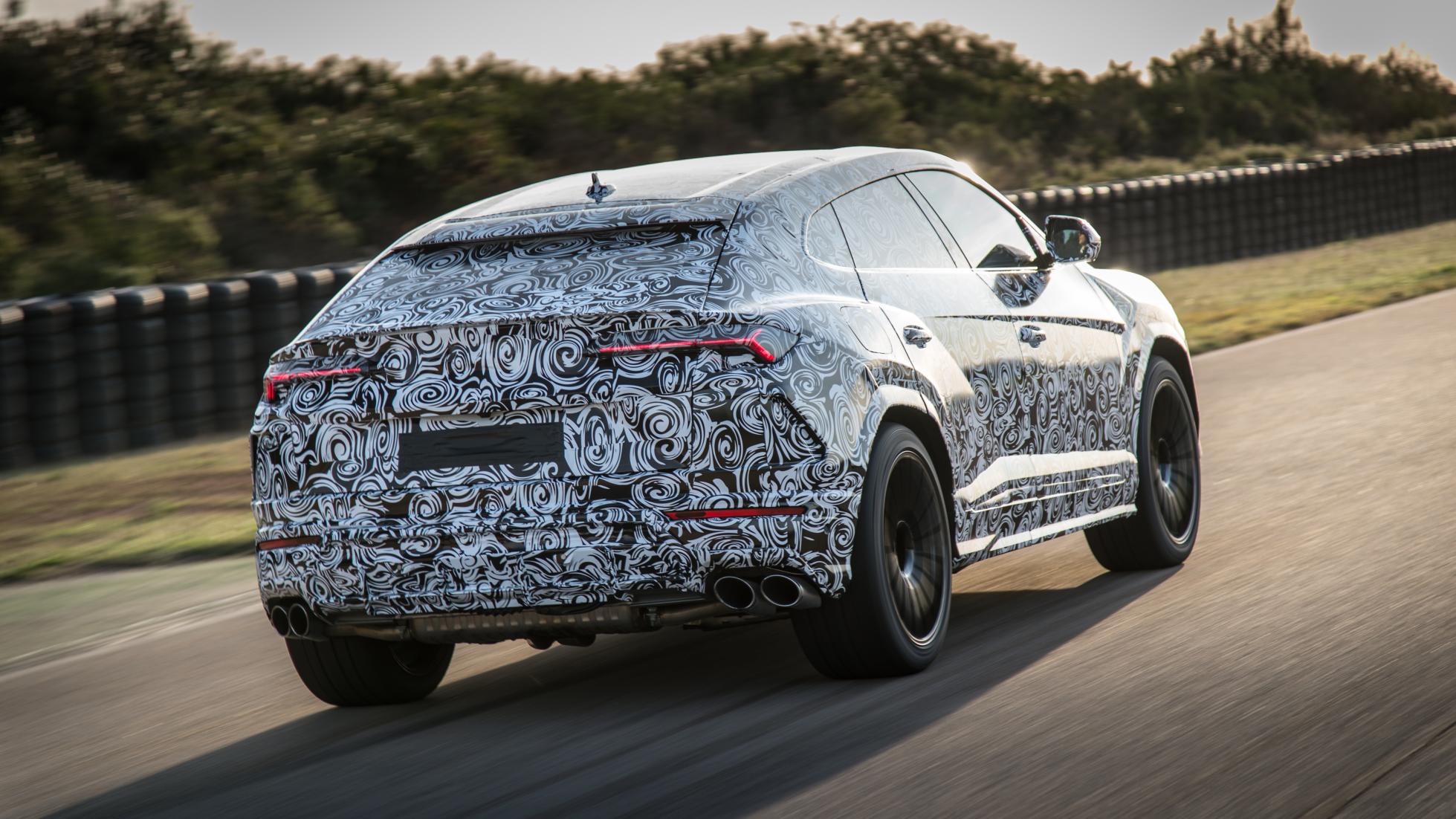
While for many the Urus will be a challenging dilution of their much-loved supercar brand, a day spent driving it has silenced many of my doubts. The challenge was always going to be to deliver a car that had the DNA of a Lamborghini running through it, and today the Urus has proved it’s the fastest SUV available – one that will demolish a track for as long as the tyres can handle it, allow you to drift down your favourite gravel road or head up a snowy mountain pass.
So this new kind of Lambo does have a place. It’s practical, spacious and laden with tech so now more of your friends and family can enjoy your Lamborghini adventure. Not only will it reach a new audience for the brand, it will provide the lifeblood that allows the company to continue to deliver the supercars we dream about for decades to come.
